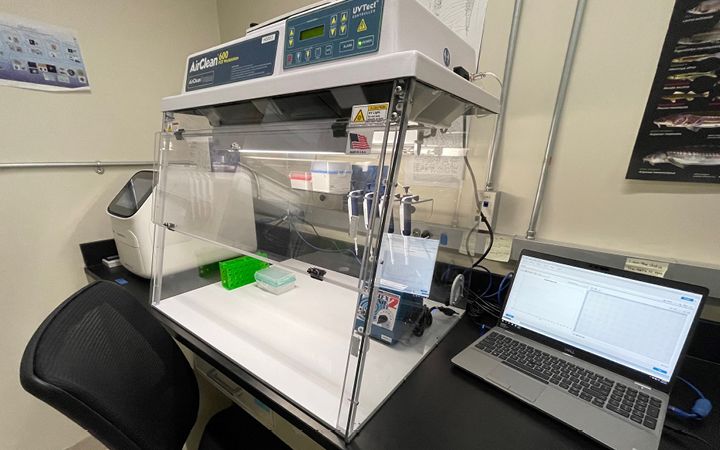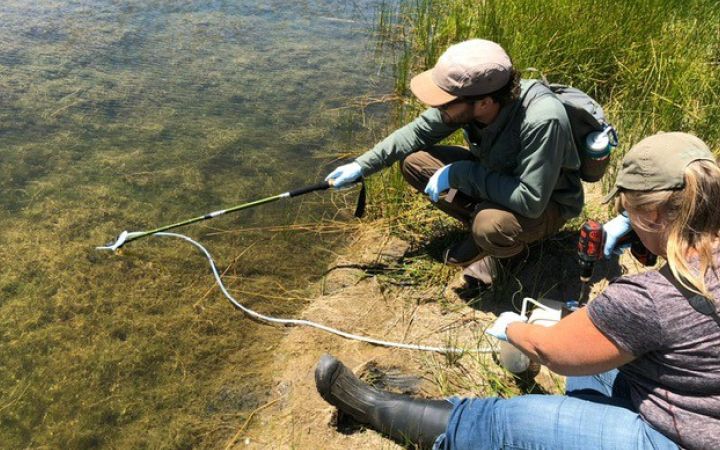
Combining technology and biology for species tracking
Our new genetics lab promotes noninvasive sampling through end-to-end services—from species sample collection to data processing and analysis

Government environmental agencies are responsible for detecting and monitoring the presence of rare and invasive species. Whether looking for salmon in California, mussels in Oregon, or salamanders in Texas, these agencies are turning to sensitive, species-specific, and noninvasive genetic tools to survey wildlife.
Our new genetics lab does that and more. It's like environmental forensics. Where we’re detecting the presence of a species from DNA they leave behind from cells shed or passed through their excretions. Something as simple as taking a water sample can be a powerful and precise way to detect when and where species are present in the environment.
So what’s inside our new lab? It houses collection equipment for field surveys and equipment to extract eDNA and run qPCR assays. More importantly, our lab supports experts who collect samples and run assays. Among our team of “-ologists” are fish and wildlife biologists with extensive knowledge and experience collecting eDNA working alongside colleagues with molecular biology, eDNA survey design, and genetics expertise.
Better for clients and wildlife
eDNA collection and analysis offers a more cost-effective service for our clients. It’s less intrusive to the ecosystem and safer for wildlife. In addition, unused DNA extractions can be archived for future analyses—such as examining the ecological community where the sample was taken.

For one project we supported, we used a traditional net-based trawl survey—where the presence of juvenile Chinook salmon was evaluated—and eDNA analysis on collected water samples. We found that the eDNA sampling was more sensitive and picked up more positive species detections in different places than the trawl method, suggesting a more widespread presence than previously thought.